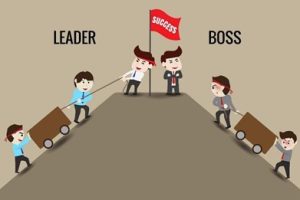The Culture of a Team Reflects the Ownership of Its Leader
“When a team takes ownership of its problems, the problems get solved.” — Jocko Willink
Leadership speaks long before words are spoken. A leader’s team is always watching — how challenges are handled, how mistakes are addressed, and how credit is shared. What communicates most loudly is not what leaders say, but what they own.
If a leader blames, the team learns to condemn. If a leader avoids responsibility, the team learns to hide. As Patrick Lencioni said, “High-performing teams are built on shared ownership, not shared excuses.”
When a leader owns outcomes, good or bad, the team learns to do the same. Ownership cascades down, shaping culture more powerfully than any policy or speech ever could.
The Problem with Blame-Driven Leadership
We’ve all seen it — a project misses a deadline, and instead of addressing the real issue, leaders look for someone to blame. The unspoken message to the team becomes: Protect yourself; don’t get caught.
This creates:
-
Fear and defensiveness
-
A culture where innovation dies because people fear failure
-
Plummeting engagement because accountability feels one-sided
As John Maxwell said, “A leader takes a little more than his share of the blame and a little less than his share of the credit.”
A leader who avoids responsibility or shifts blame fosters tension and guardedness. The team starts playing it safe instead of giving their best.
👉 Click here to discover how top leaders shift from pointing fingers to taking ownership that transforms team culture and performance.
Why Ownership Changes Everything
When leaders step up and say, “The buck stops with me,” something shifts. Trust builds. The team stops hiding mistakes and starts focusing on solutions.
As John Maxwell reminds us, “Leadership is taking responsibility while others are making excuses.”
Here’s what ownership does:
-
Inspires accountability: Leaders who own outcomes set the standard for their teams.
-
Builds trust: Teams respect leaders who carry responsibility, not just authority.
-
Fuels resilience: Mistakes become growth opportunities, not excuses for blame.
How to Model Ownership as a Leader
-
Acknowledge Mistakes Openly: Don’t downplay or deflect—own them fully.
-
Share Credit, Shoulder Responsibility: Celebrate wins with your team, but personally own the losses.
-
Ask Better Questions: Instead of “Who’s at fault?” ask “What can we do differently next time?”
-
Coach Through Accountability: Teach your team that ownership isn’t about blame; it’s about progress.
As Stephen R. Covey said, “Accountability breeds response-ability.” This is how cultures shift—not through posters and slogans, but through leaders who live ownership daily.
👉 Click here to see how ownership starts with you and spreads through your team.
Leadership Culture Begins with You
The truth is simple: the culture of a team reflects the ownership of its leader.
If you want a culture of trust, accountability, and performance, it has to begin with you. Ownership doesn’t trickle up — it cascades down. When leaders take ownership of their impact, they create teams that take ownership of their results.
Call to Action
✅ Ready to build a culture of ownership in your organisation?
Book a Discovery Call now and let’s discuss how our tailored leadership and coaching programs can empower your leaders and teams to set a new standard of excellence.
Come Along and Grow with Grace!
🔹 References
-
Jocko Willink, Extreme Ownership
-
Patrick Lencioni, The Five Dysfunctions of a Team
-
John C. Maxwell, The 21 Irrefutable Laws of Leadership
-
Stephen R. Covey, The 7 Habits of Highly Effective People





